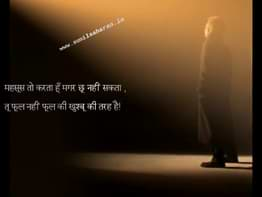Smart Grids: Block Diagram, Components, Communication and Challenges
Smart grids are revolutionizing how we manage electricity distribution. This article delves into the key components of smart grids and their communication methods, exploring their role in creating a more efficient and intelligent energy distribution system.
Block Diagram of Smart Grids and Its Communication Approaches
As we have already discussed basics of Smart grids,which represent a significant advancement in the management of electrical power distribution. They rely on a combination of advanced hardware and communication systems to provide real-time data, control, and automation for a more efficient and responsive energy grid. In this article, we will explore the block diagram of smart grids and the communication approaches that make them function effectively.
Block Diagram of a Smart Grid
A smart grid is composed of several key components that work together to enhance grid management and energy distribution. The block diagram provides an overview of these components:
- Generation Sources: At the heart of any electrical grid are the various sources of energy generation. These can include fossil fuel power plants, nuclear reactors, renewable sources like solar and wind, and more.
- Transmission Lines: The generated electricity is transmitted over high-voltage transmission lines to substations. These lines often span long distances and may cross different regions.
- Substations: Substations act as intermediaries between the transmission and distribution systems. They step down the voltage for further distribution.
- Distribution Lines: The distribution lines carry electricity from substations to consumers. These are typically lower voltage lines that connect to homes, businesses, and other end-users.
- Smart Meters: Smart meters are installed at consumer locations and replace traditional meters. They measure electricity consumption and communicate data to the utility.
- IoT Sensors: IoT sensors are deployed across the grid, collecting data on parameters like voltage, current, power quality, and more. These sensors play a crucial role in real-time monitoring.
- Communication Networks: Communication networks link all components of the smart grid. These networks include wired and wireless connections, often using protocols like Wi-Fi, cellular, or dedicated mesh networks.
- Control Centre: The control centre is the brain of the smart grid. It collects and processes data from meters and sensors, making real-time decisions to optimize the grid's performance.
- Renewable Energy Sources: Smart grids are designed to integrate renewable energy sources like solar panels and wind turbines. These sources inject power into the grid when available.
- Consumer Interface: Consumers can access information about their energy consumption and make informed decisions about their usage, often through web interfaces or mobile apps.
Communication Approaches in a Smart Grid
Smart grids rely on various communication approaches to facilitate data exchange and control. Here are some of the key communication methods:
- Advanced Metering Infrastructure (AMI): AMI enables two-way communication between smart meters and utility companies. It collects consumption data and can receive commands to remotely disconnect or reconnect service.
- SCADA (Supervisory Control and Data Acquisition): SCADA systems are used for monitoring and controlling grid components. They collect data from IoT sensors and provide a visual interface for operators to manage the grid.
- Power Line Communication (PLC): Some smart grids use power lines to carry data signals. PLC systems are convenient for communication over existing electrical infrastructure, but they may face limitations in terms of bandwidth and reliability.
- Wireless Mesh Networks: Wireless mesh networks are commonly used to connect IoT sensors and smart meters. They form a self-healing network where each node can relay data, ensuring reliability and coverage.
- Dedicated Fiber Networks: Fiber-optic networks offer high bandwidth and low latency, making them suitable for critical communication in the smart grid.
- Cellular Networks: Cellular communication provides a wide coverage area and is often used for remote monitoring and control of grid assets.
- Satellite Communication: In remote or challenging terrains, satellite communication can be employed to ensure connectivity.
- Internet Protocols (IP): Many smart grid devices and systems use standard internet protocols, allowing seamless integration with existing internet infrastructure.
Challenges in Smart Grid Communication
While smart grid communication approaches offer numerous advantages, they also face challenges:
- Security: Ensuring the security of data and control systems is paramount to protect against cyber threats.
- Interoperability: Different components and systems from various vendors must interoperate seamlessly, necessitating standardized communication protocols.
- Bandwidth and Latency: Real-time control and monitoring require low latency and sufficient bandwidth, which can be challenging to achieve in some communication networks.
- Privacy: Balancing the need for data collection with consumer privacy is a delicate challenge.
- Resilience: The communication infrastructure must be resilient to disruptions, including natural disasters and physical attacks.
In conclusion, the block diagram of smart grids and their communication approaches represent a complex and interconnected system designed to enhance the efficiency, reliability, and sustainability of electrical power distribution. As technology continues to advance, smart grids will become even more sophisticated, overcoming existing challenges to create a more responsive and intelligent energy grid.
Tags :Smart Grids, Block Diagram of Smart Grids, Challenges to Smart Grid, Smart Grid Communication
ये हमारा कर्तव्य है कि हम अपनी स्वतंत्रता का मोल अपने खून से चुकाएं, हमें अपने बलिदान और परिश्रम से जो आज़ादी मिले, हमारे अन्दर उसकी रक्षा करने की ताकत होनी चाहिए।
It Is Our Duty That We Pay The Price Of Our Freedom With Our Blood, The Freedom That We Get Through Our Sacrifices And Hard Work, We Must Have The Strength To Protect It.
Site Statistics
Stats at a Glance
Articles: 54
Viewed: 415752 Times
Photos : 53
Viewed: 583491 Times
Questions : 2344
Viewed: 387198 Times
Page Load No. 3401675
Photos
Take Quiz
1 Liners For Exam
Show Questions(1 by 1)




